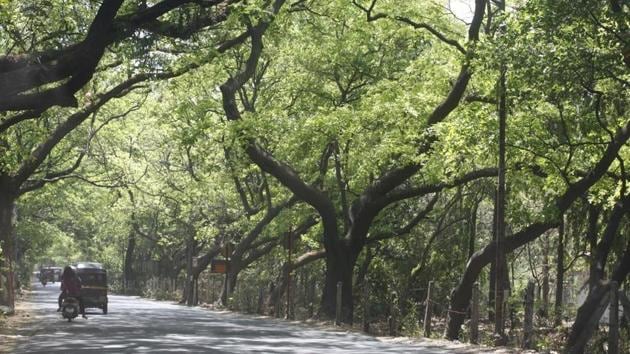Data on Mumbai’s trees is inconsistent and suspicious
The BMC, which plants saplings along roads during the monsoon, has been planting fewer trees in the last few year
How many trees does Mumbai have? Recently released data suggests that the city does not have reliable data on its tree population.

Data from the decennial tree census, which was gathered by the Brihanmumbai Municipal Corporation (BMC) in 2018 but released recently, reveals that the city has around 2.9 million trees, a million more than the count in 2008. The latest data is claimed to more accurate as the census used the geographic information system (GIS) and global positioning system (GPS) to locate and number trees.
The census does not reflect the extent of the city’s tree cover as the count did not cover the Sanjay Gandhi National Park, a part of which lies in the Mumbai suburban district. The latest figure is boosted by trees in Aarey Milk Colony – which is estimated to have around 400,000 trees. The 2008 census had excluded trees in Aarey. These inconsistencies in the counting methodology make it difficult to arrive at a reliable figure for the city’s tree population.
Citizens’ groups believe that the data is not correct. The BMC, which plants saplings along roads during the monsoon, has been planting fewer trees in the last few years. One group, Watchdog Foundation, has said that their estimate is that the BMC could not have planted more than 120,000 trees in the last decade, making it impossible for the city’s tree population to have soared by a million during this period. Also, there is no data on trees planted by citizens’ groups.
Other sets of data with the civic body on the city’s trees are inconsistent with the census findings. According to BMC’s garden department, there were over 2.1 million trees in the city in 2015. The annual Environment Status Report (ESR) released by the BMC reported 2.4 million trees in 2014-15. The ESR for 2015-16 reported 2.9 million trees, a figure which was reached only in 2018 if one goes by the tree census. The ESR for 2016-17 said that the city had 3.1 million trees - 200,000 more trees than those counted in the census two years later.
Mumbai continues to lose trees. Data released by BMC’s Tree Authority, whose permission is required for cutting of trees in the city, says that the agency allowed the removal of 14,518 trees in 2019 - equivalent to a daily loss of 40 trees. As the city witnesses a flurry of construction for infrastructure and housing, trees have been a casualty. There has been a 65% increase in the number of permissions issued for tree cutting in 2019 compared to the previous year when permissions were given to cut 8,775 trees, or 24 trees per day.
The municipal data is inconsistent with other studies. The India State of Forest Report (ISFR) 2019 developed by the Forest Survey of India (FSI), released last week, says that Mumbai suburban district lost 0.14 sq. km or 14 hectares of forests over the last two years. Forest cover differs from tree cover as the latter accounts for all trees in a particular area, including those outside forest areas.
The data on exotic and indigenous tree species also adds to the confusion. A large number of trees in Mumbai are from exotic varieties that were selected for aesthetic looks and faster growth but while most of these species thrive some, like the rain trees from South America, have been susceptible to pests. Other species, with their root and branch structures meant for a different climate and soil, are morphologically not suited for the city’s topography, leading to tree falls that have killed citizens. BMC says that it has been trying to increase the proportion of indigenous trees, with the latest tree census claiming that 1.9 million – or a little over two-thirds of the tree population - are from indigenous species, compared to 800,000 exotics – out of the 1.9 million – in 2008. This should mean that the number of trees from indigenous species has grown by 140% in a decade - a suspicious piece of statistic.




